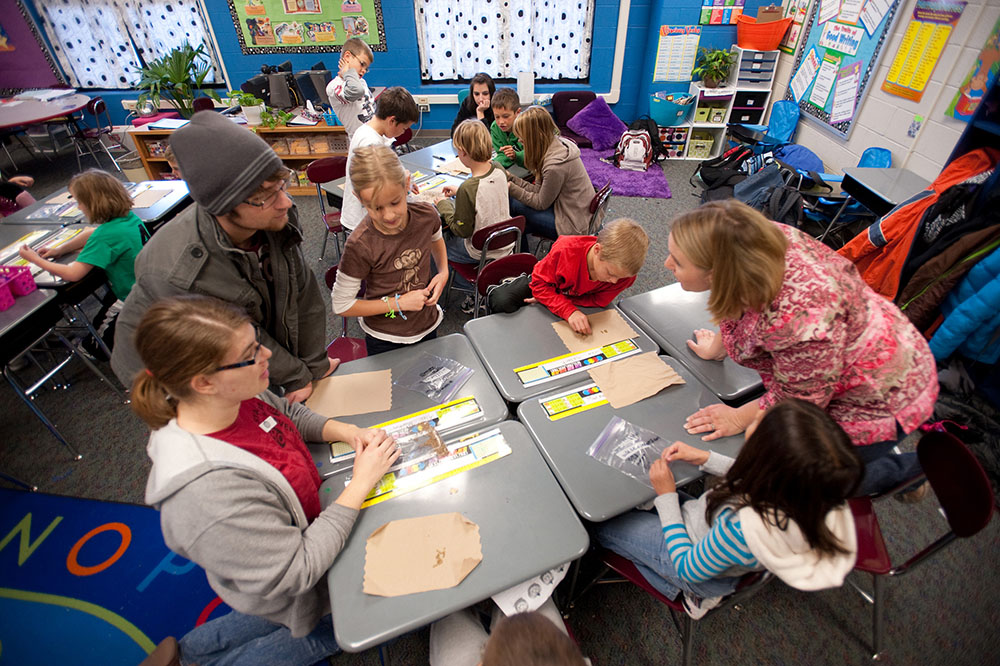You won’t very often find elementary school students in a college class. On the same note, college students look funny sitting in chairs made for five-year-olds. Despite a divergence from the norm, Hesston College Environmental Biology students and kindergartners and third graders at Hesston Elementary School collaborated three times during the fall semester on a prairie plant project.
The idea for collaboration sprouted when kindergarten teacher DeDee Lehman and third grade teacher MeLissa Dryzmalla took a prairie restoration course at Dyck Arboretum of the Plains during the summer. One of the instructors was Hesston College biology faculty Lorna Harder. Dryzmalla and Lehman expressed their desire to do a prairie restoration project in their classrooms, and Harder offered her services.
Harder’s Environmental Biology class used three of their lab times this semester to meet with the elementary students to research prairie plants.
“I want my class labs to be meaningful and more than just an exercise,” said Harder. “This was a great opportunity for the college students to be a part of the learning process but also to help teach their younger counterparts.”
On one meeting the students did a plant scavenger hunt of prairie plants in the arboretum. Another project was a bug sweep, in which they observed and noted the native plants that attracted certain insects. For the final project together, the students harvested seeds from dead prairie plants and prepared them for simulated winter dormancy in a refrigerator.
“The kids have had fun working with the college students,” said third grade teacher MeLissa Dryzmalla. “This has given them a chance to learn how the prairie works, discover ways to protect and improve it and get to know each other.”
A group of third grade girls – Olivia Thompson, Elizabeth Lamp and Elly Morales – agreed that their favorite project in the process was looking for the different flowers and leaves during the scavenger hunt. Meanwhile, a table of boys – Cody Wohlgemuth, Jackson Humphreys, Landyn Stoltzfus and Isaiah Epp – reminisced about their favorite project – watching and chasing insects during the bug sweep.
“The college students help us out a lot,” said Thompson. “I like when we get to work with them.”
As the students carefully counted out seeds for each Ziploc bag – half in dry conditions, half in wet conditions – they made predictions and discussed which group would likely be more successful. Over the next several weeks, the students will observe how each set of seeds thrives in their conditions before planting them in their own prairie at the elementary school in the spring.
Much of Harder’s college course curriculum focuses on studying and understanding the local Kansas flora and fauna with hands-on projects and experiments. Other than their collaboration on the prairie restoration project, Harder’s students have helped install and maintain a rain garden at the Dyck Arboretum and have participated in the college’s community garden.
“I want my students to understand what it means to repair the earth, and I hope this project helps them see just what that means and entails,” said Harder. “I want Hesston College students to be agents of change.”
“Working with the elementary students on this project ties into what we do in class,” said Hesston College sophomore Amber Mayer of Wichita, Kan. “Concepts become easier to understand when we do lab projects that allow us to put the ideas to practice.”
As the Hesston Elementary School prairie begins to grow with native gayfeather, compass plant, coneflower, wild blue indigo and prairie dock, it will serve as a reminder for many students of the importance in preserving the land and collaboration.


